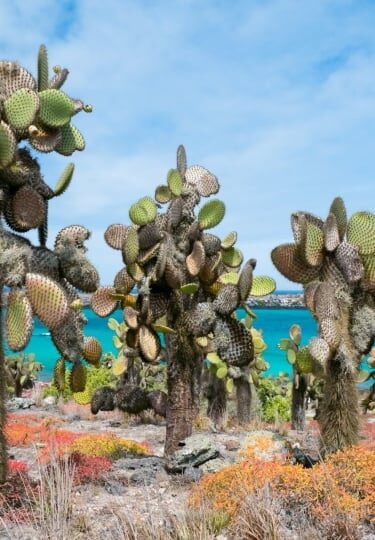Stark volcanic scenery, white sand beaches, and wildlife beyond your wildest dreams, both on land and under the water, make Santa Cruz island one of the most thrilling places in the Galapagos to visit.
You’ll find enormous diversity here, from the buzzing little town of Puerto Ayora to hilltop hikes, shady mangroves, offshore islands rich with wildlife, and misty, greener uplands where giant tortoises roam.
A visit to Santa Cruz, Galapagos is a life-changing experience for many. Once you’ve been, you will always be an ambassador for this special place.
Why Visit Santa Cruz
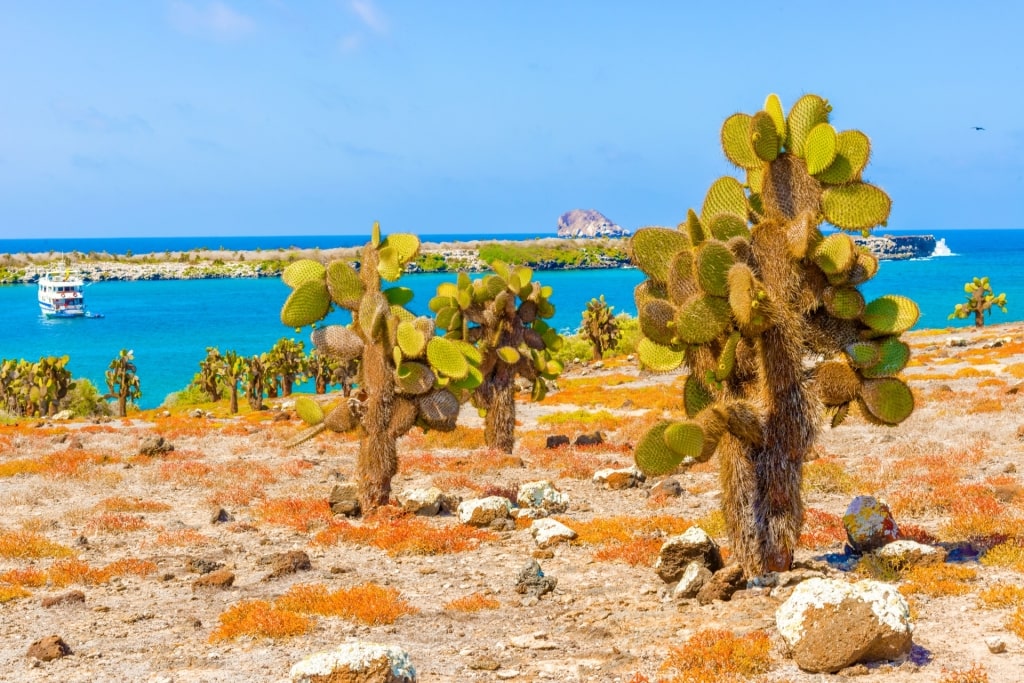
Santa Cruz
As one of the biggest Galapagos Islands and the most populous, Santa Cruz offers a wealth of contrasting experiences. In fact, it’s the only island in the Galapagos where it’s relatively easy to see so many different landscapes, from hilly uplands to volcanic craters, lava tubes, and beaches, all in one visit.
The activities on offer on Santa Cruz are wonderfully varied. You can stroll on soft, white beaches and tumbled black rocks where marine iguanas bask.
There are hikes through forests of cacti, boat rides past green mangrove colonies to spot Galapagos birds, and snorkeling adventures where you could swim alongside graceful green turtles and whitetip reef sharks.
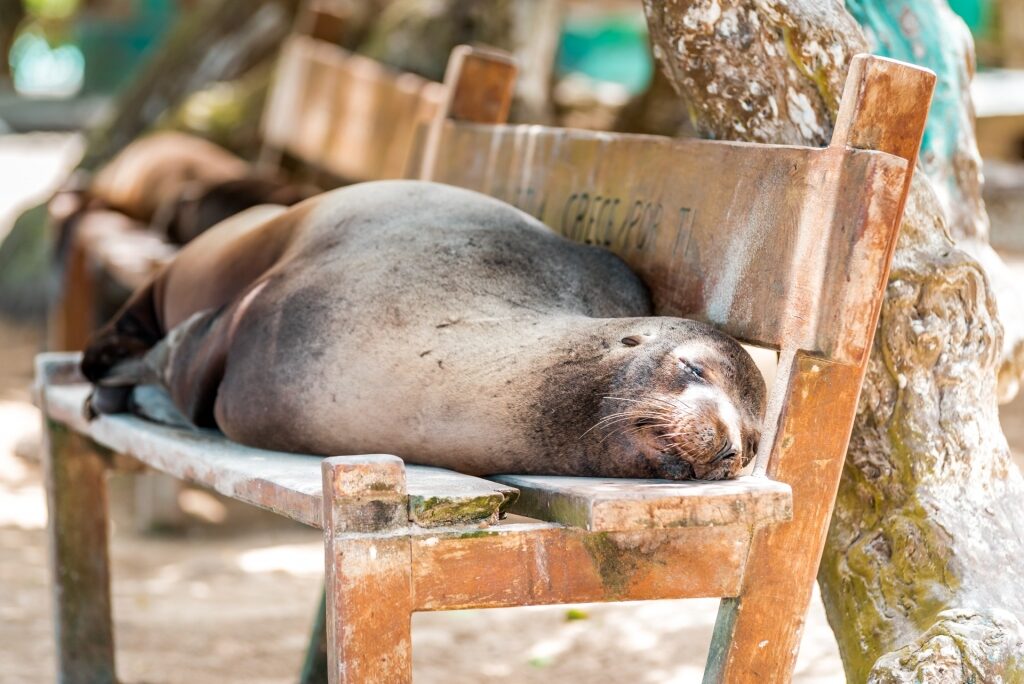
Sea lion
As the main population center of the islands, the little town of Puerto Ayora presents a different face of the Galapagos, too. Here, humans share their space with animals, and there’s a wonderfully laid-back atmosphere as well as a handful of shops and restaurants to explore.
Don’t miss the fascinating Charles Darwin Research Station, an important center for the conservation of the endangered giant tortoise.
History & Culture
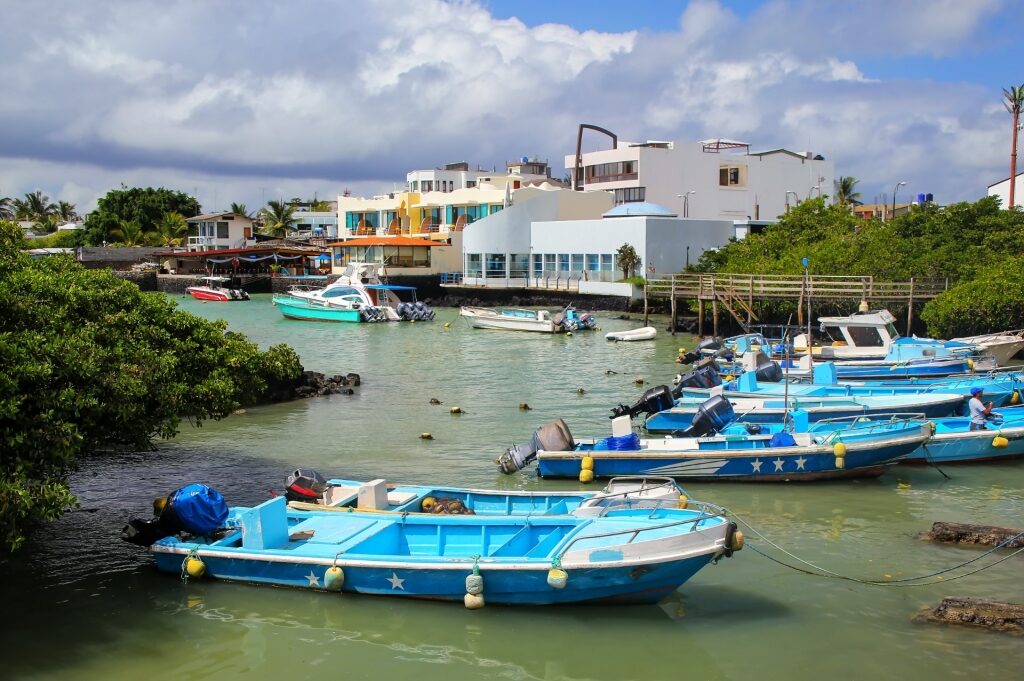
Puerto Ayora
While the Galapagos Islands, 600 miles off the coast of Ecuador, are estimated to have formed around four to five million years ago, human contact with this remote archipelago is much more recent.
It is only since the golden age of exploration from the 15th century onwards that they were “discovered,” and it would not be until the 20th century that they would be home to a permanent population.
The first humans are documented to have arrived in 1535. These 16th-century buccaneers and bounty hunters, and those who followed them, caused terrible damage to the islands, taking tortoises for food during their long sea voyages, slaughtering whales for oil, and introducing invasive species that disrupted the fragile ecosystem.
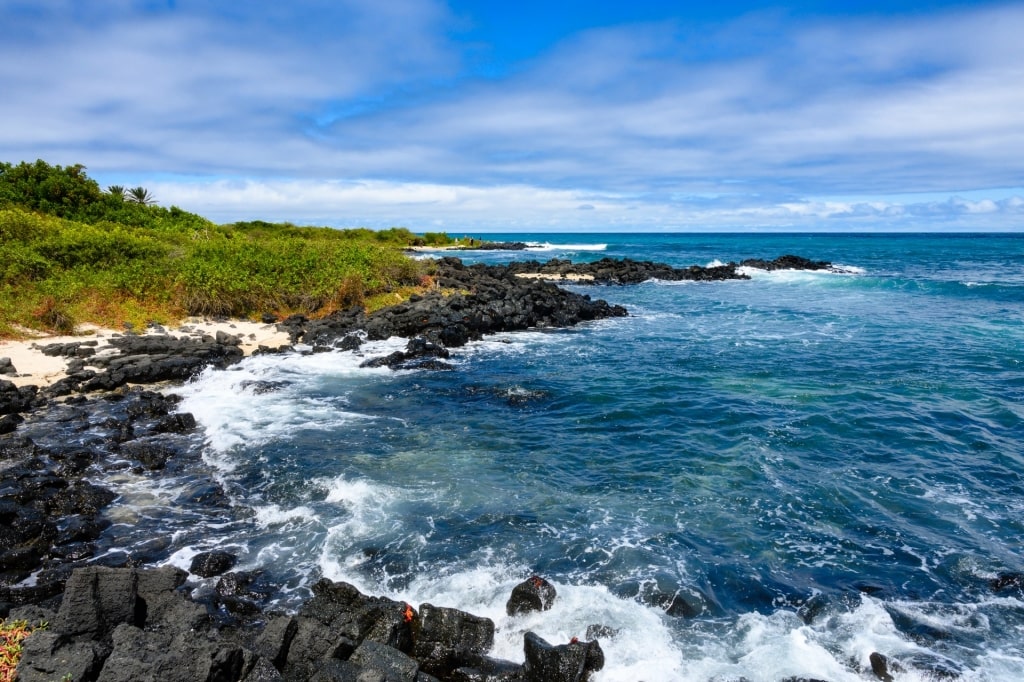
Santa Cruz
The islands were claimed by Ecuador in 1832. Charles Darwin arrived in September 1835 on the HMS Beagle, and over a period of five weeks, collected specimens of birds, animals and rocks. It was on the basis of his study of these specimens that he formed his theory of evolution.
Santa Cruz was settled in the 20th century by Americans and Europeans, who arrived between the two world wars. Farmers grew (and still grow) coffee, avocado, sugar cane, and citrus in the fertile highlands.
Later, Puerto Ayora, situated on the sheltered Academy Bay, developed as a tourism hub, as well as the headquarters of the Galapagos National Park and the internationally recognized Charles Darwin Research Center.
Wildlife & Nature
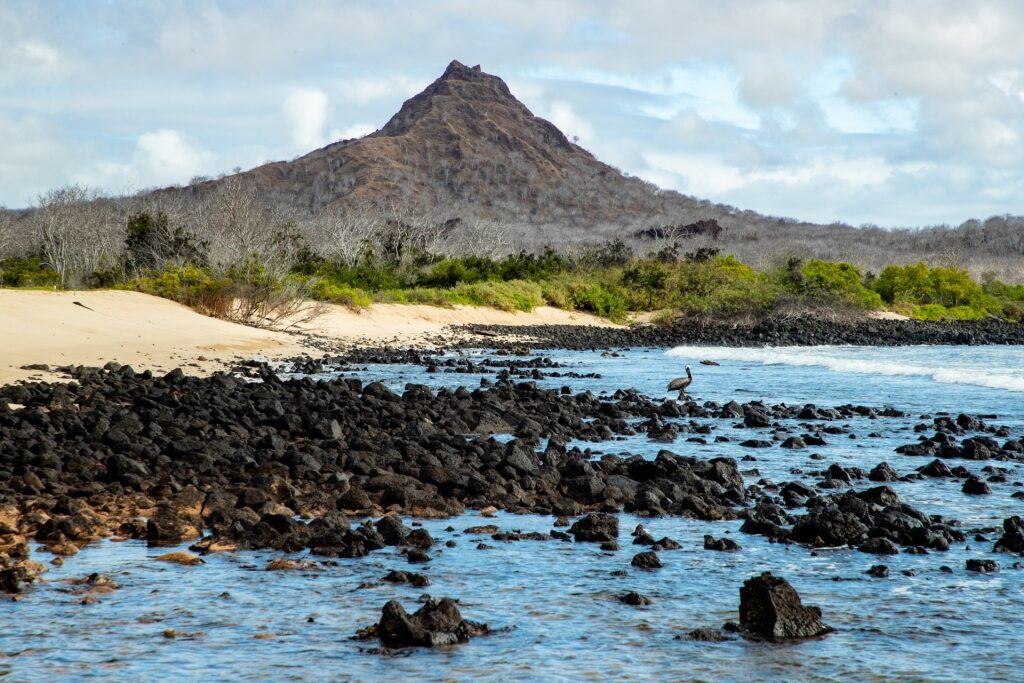
Santa Cruz
Wildlife is the single biggest reason you would visit Santa Cruz and the Galapagos as a whole. There’s nowhere like it in terms of animal species, scenery, the underwater world, and the stark, pristine beauty of the volcanic islands.
Many of the creatures that are endemic to the Galapagos can be found on Santa Cruz, which is what makes it such a good island to visit. You’ll see land and marine iguanas aplenty, as well as lava lizards and sea lions.
Bird species here include blue-footed and Nazca boobies, owls, herons, flamingos, Darwin’s finches, and mockingbirds.
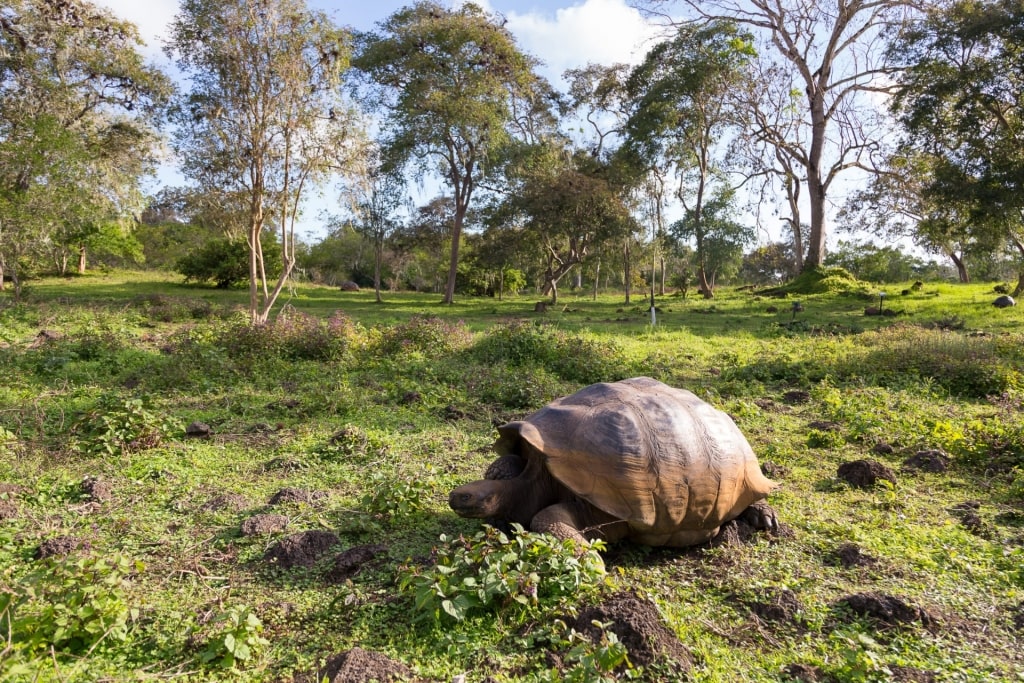
Galapagos tortoise
The verdant, mist-shrouded highlands of this volcanic island are home to dozens of giant tortoises, while the excellent Charles Darwin Research Station in Puerto Ayora is a superb educational facility about the conservation and captive breeding of these gentle, highly endangered animals.
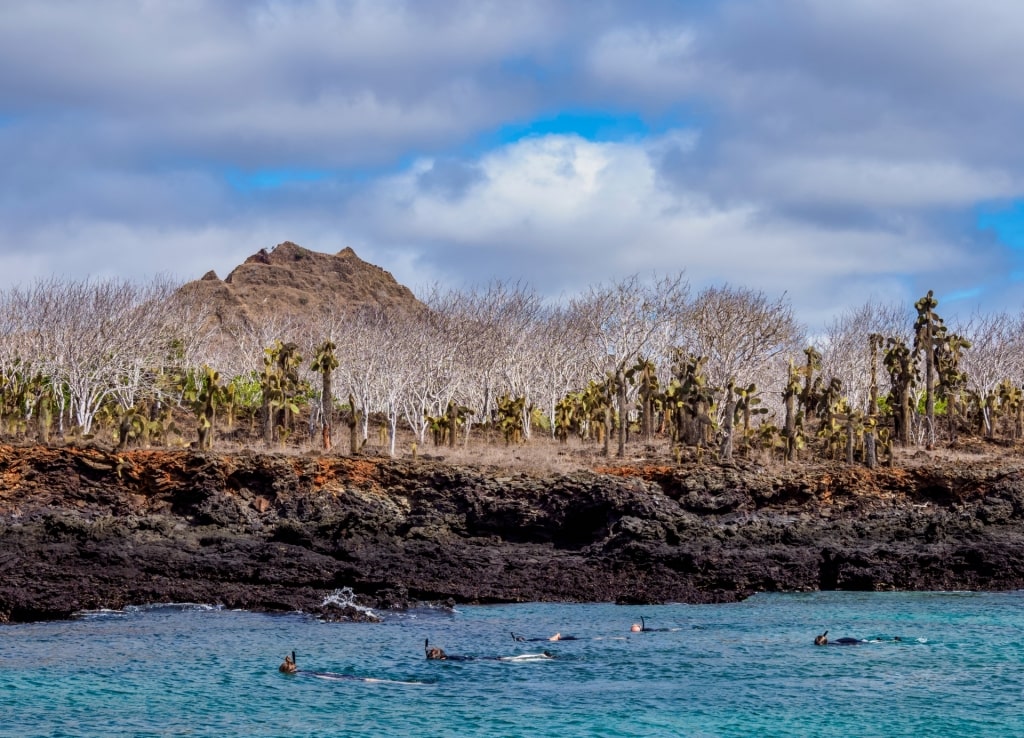
Santa Cruz
Go snorkeling and you can discover the underwater world, too. Shoals of brilliantly colored tropical fish surround you, while turtles glide through the warm water. Rays bury themselves in the sand, and reef sharks sometimes cruise the cooler depths.
Tips for Visiting Santa Cruz, Galapagos
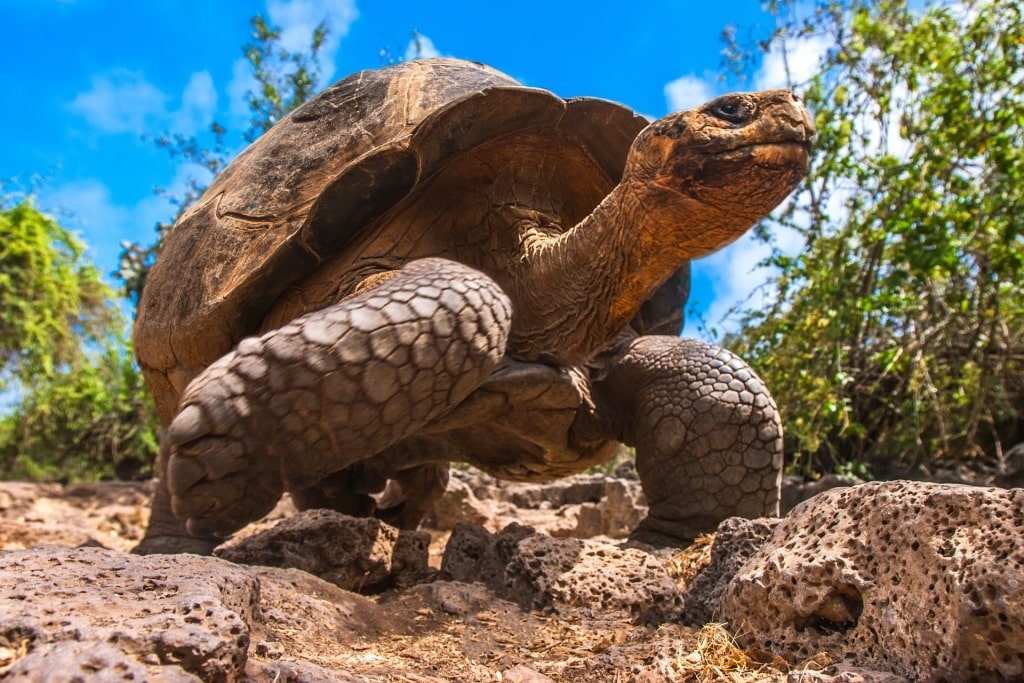
Galapagos tortoise
Pack with care for a trip to Santa Cruz. Neutral colors, wicking fabrics, a wide-brimmed hat, a water bottle, and sunblock are all a must on your Galapagos packing list.
And your camera, of course; there’s nowhere like this for photography, where the animals are completely unafraid and barely notice as you approach them.
Don’t try to bring any food containing seeds or any fresh fruit to Santa Cruz. All luggage is inspected by the park authorities when you arrive on the islands, and biosecurity is extremely tight to avoid invasive species taking hold here.
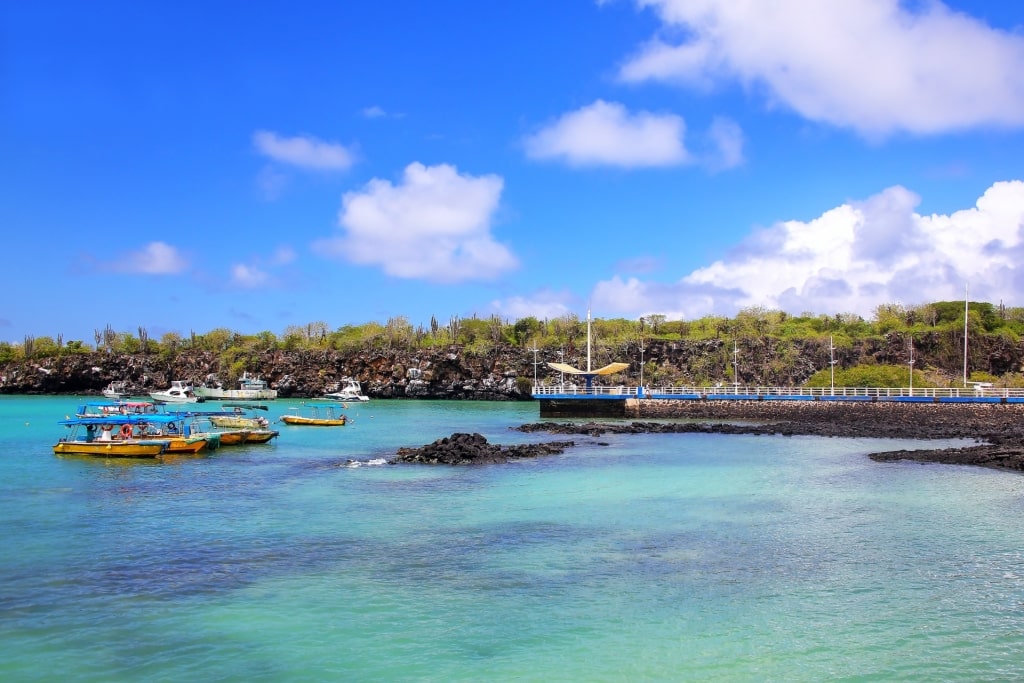
Puerto Ayora
Also bear in mind that for much of your time on Santa Cruz, you’ll be out in the wild. Don’t expect beach restaurants or facilities; it’s unlikely you’ll even see other humans, which is part of the appeal of this pristine place.
Although you can, of course, explore Puerto Ayora on your own, and a couple of the nearby beaches, most sites can only be visited with a National Park guide.
It’s really important to follow the rules of the park and the instructions of the guides when it comes to sticking to the marked trails and keeping your distance from the wildlife.
Things to Do & Attractions in Santa Cruz
Climb Dragon Hill
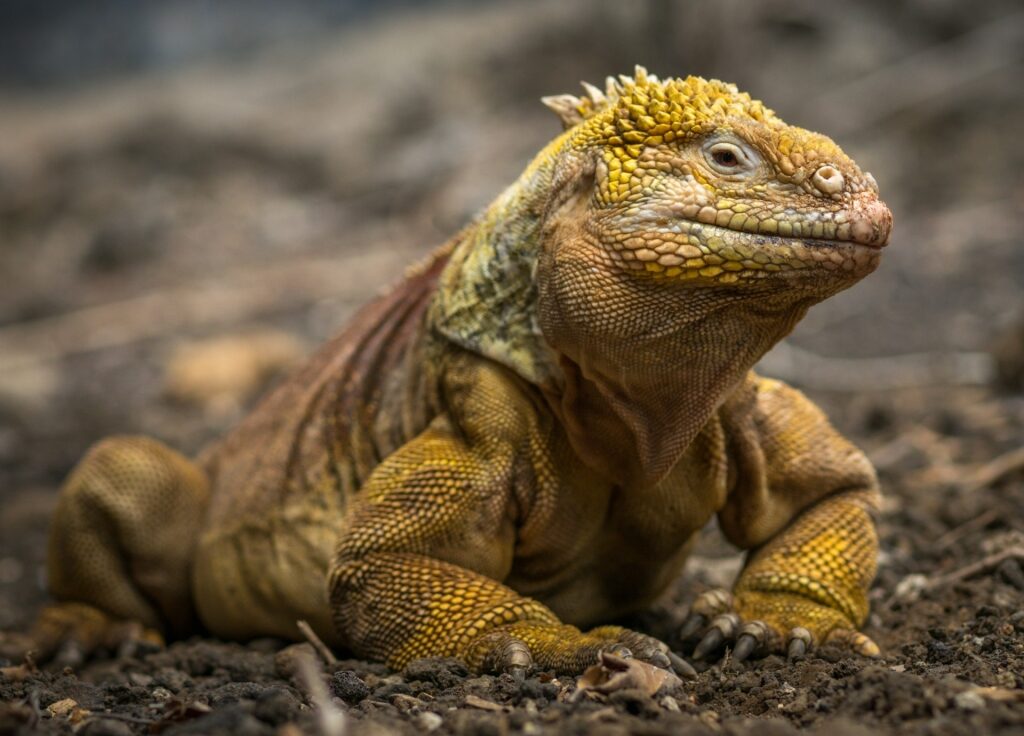
Land iguana
Pointed, rocky Dragon Hill, on the northwest coast of Santa Cruz, gets its name from its dense population of dragon-like land iguanas.
These majestic creatures have a spine of spikes and a craggy, almost prehistoric appearance. You’ll spot them everywhere, basking in the sun like statues, munching on the vegetation, and sometimes shuffling across the trail right in front of you.
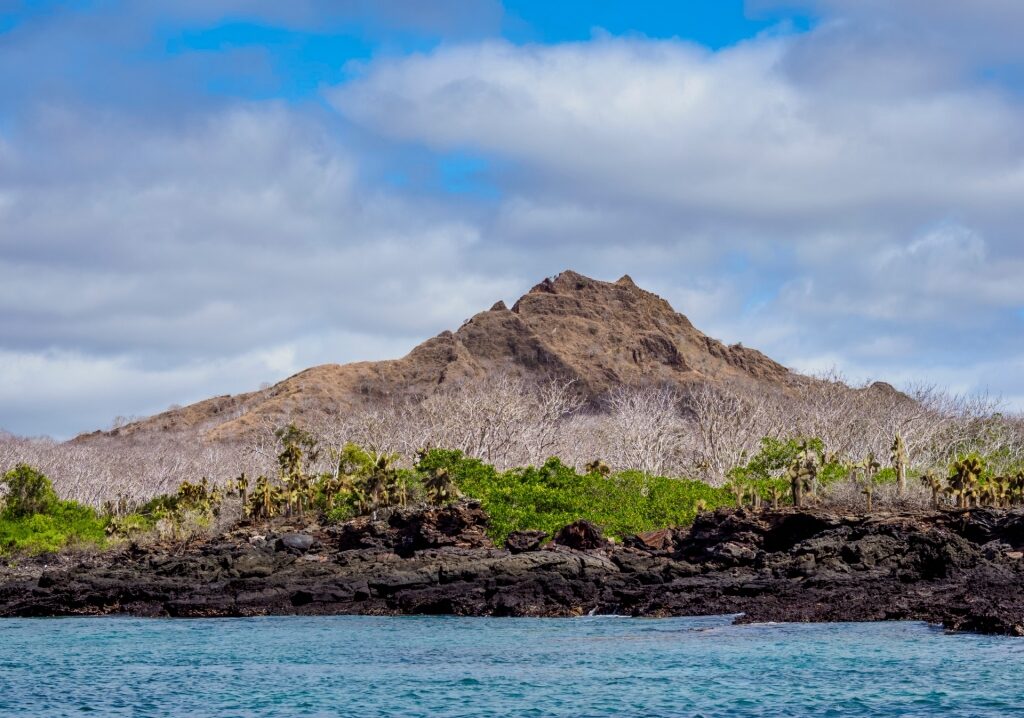
Dragon Hill
The trail upwards is lined with palo santo, or incense trees (also known as “holy stick trees”), and Galapagos cotton plants. There’s a wonderful view from the top of the hill of the salt lagoon below, where flamingos sometimes stop to feed.
Look out for yellow warblers, Darwin’s finches, and mockingbirds, too; you can’t miss the curious mockingbirds as they will sometimes land on you.
The hike takes about two hours, with a chance to swim from the beach afterward.
Stroll Las Bachas Beach
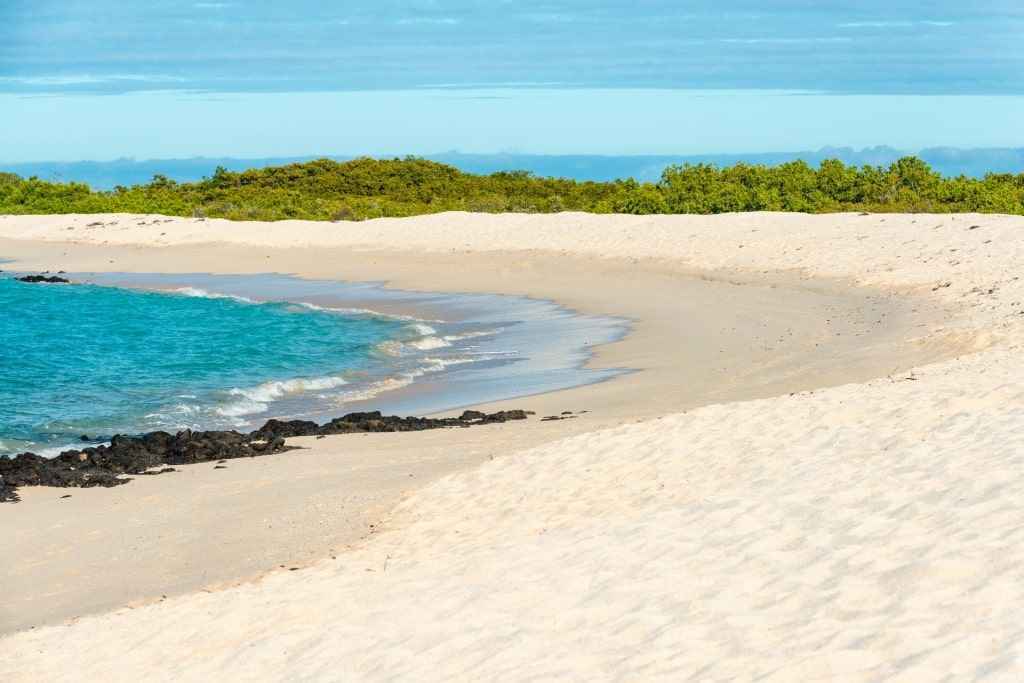
Las Bachas Beach
“Bachas” is a corruption of the word “barges”. This Galapagos beach, on the north side of Santa Cruz, gets its name from the wrecks of two American barges that had been kept at the U.S. base on nearby Baltra island in the 1950s, but had broken free of their moorings and run aground here.
You can see the remains of one of the barges today, although it’s been taken over by nature and is mainly buried in the sand.
Las Bachas is a wonderful place to stroll and spot wildlife. Bright orange Sally Lightfoot crabs scuttle among the rocks between basking marine iguanas. You could see blue-footed boobies here, too.
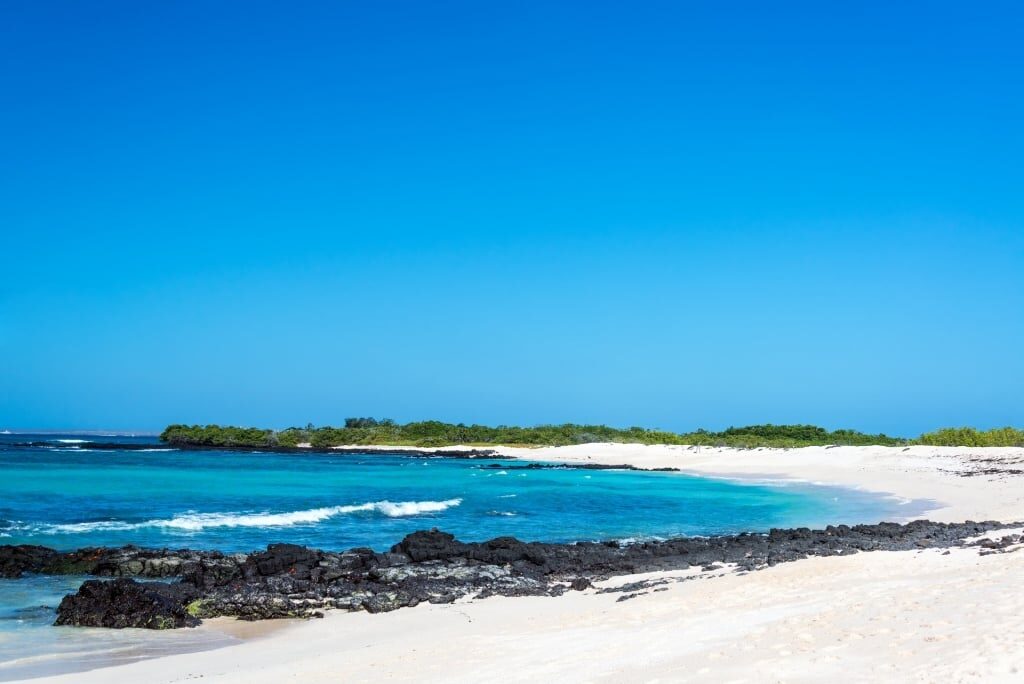
Las Bachas Beach
Look out for turtle tracks in the sand—this is a nesting spot for green turtles, and if you snorkel around the rocks off the beach, you could well spot one gliding through the clear water.
Behind the beach is a saltwater lagoon, visited by flamingos and surrounded by mangroves, another place to spot native birds.
Wander Around Puerto Ayora
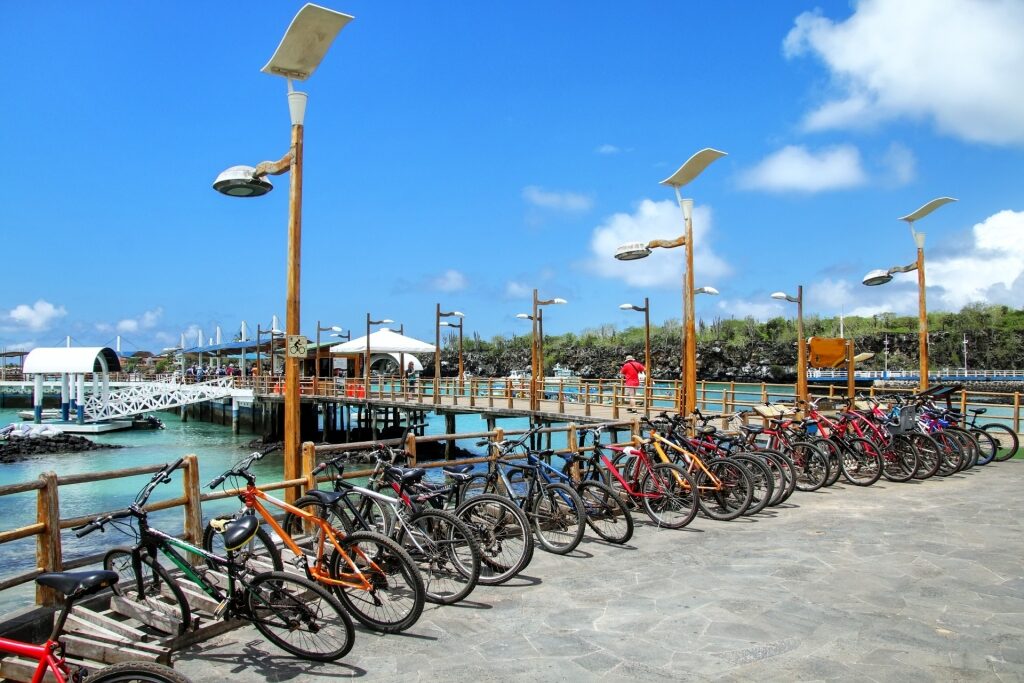
Puerto Ayora
The main population center of the Galapagos, buzzing little Puerto Ayora can be quite a culture shock if you’ve been out in the wild for a few days. Its population is only 12,000 but it feels like a metropolis when you’ve been communing with nature.
This is one of the few places in the Galapagos where you can go out for coffee or a meal, and browse the shops for souvenirs.
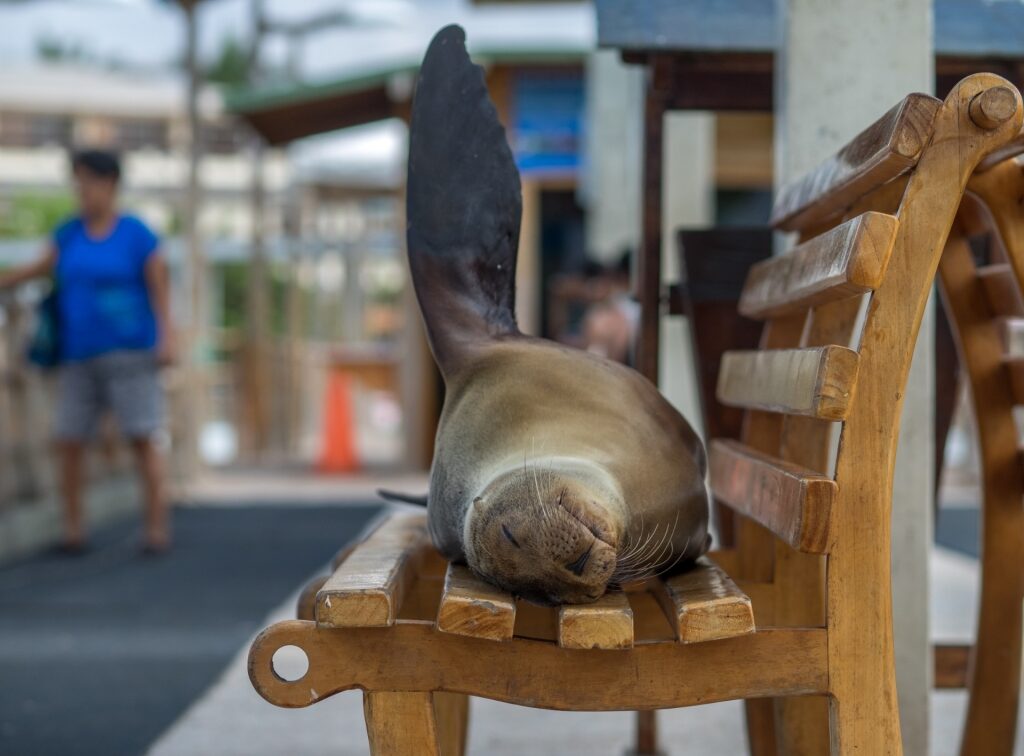
Sea lion
Wildlife lovers will be enchanted by the way the local creatures have taken over the town. Sea lions snooze on benches at the pier and along the waterfront, while iguanas sun themselves on walls.
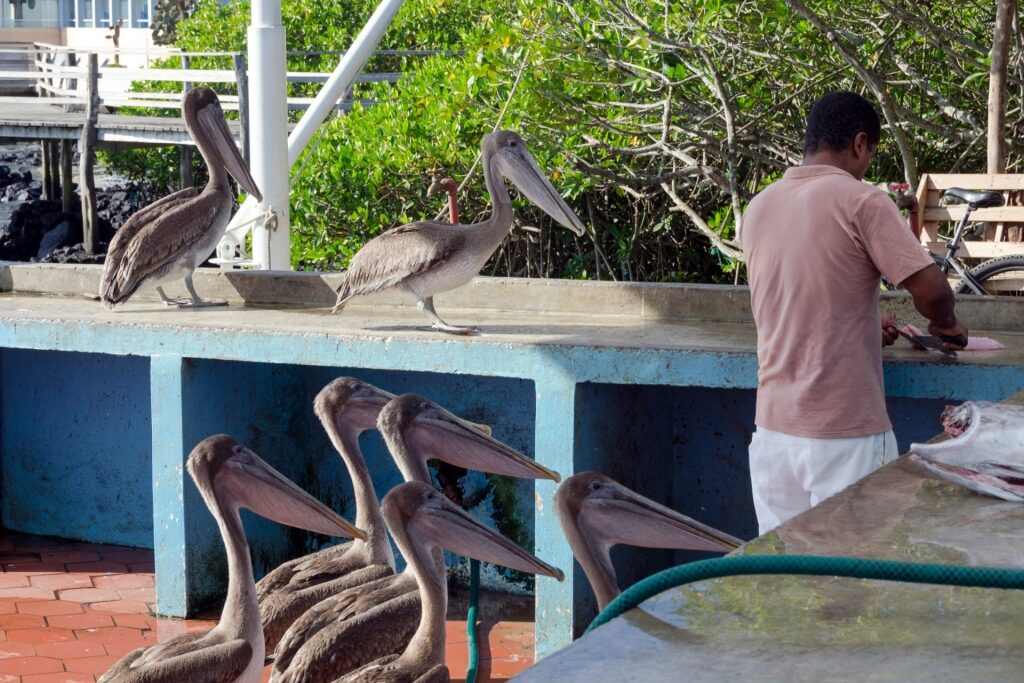
Fish market
Head for the fish market off Avenida Charles Darwin, the main thoroughfare, and you’ll be jostling for position with pelicans and yet more sea lions, which wait, often impatiently, for anything discarded by the local fishermen.
Puerto Ayora is easily small enough to stroll around. This is the place to pick up souvenirs of your trip, from local art to photographic prints, crafts, bags of Galapagos coffee, and jewelry.
Visit the Charles Darwin Research Station
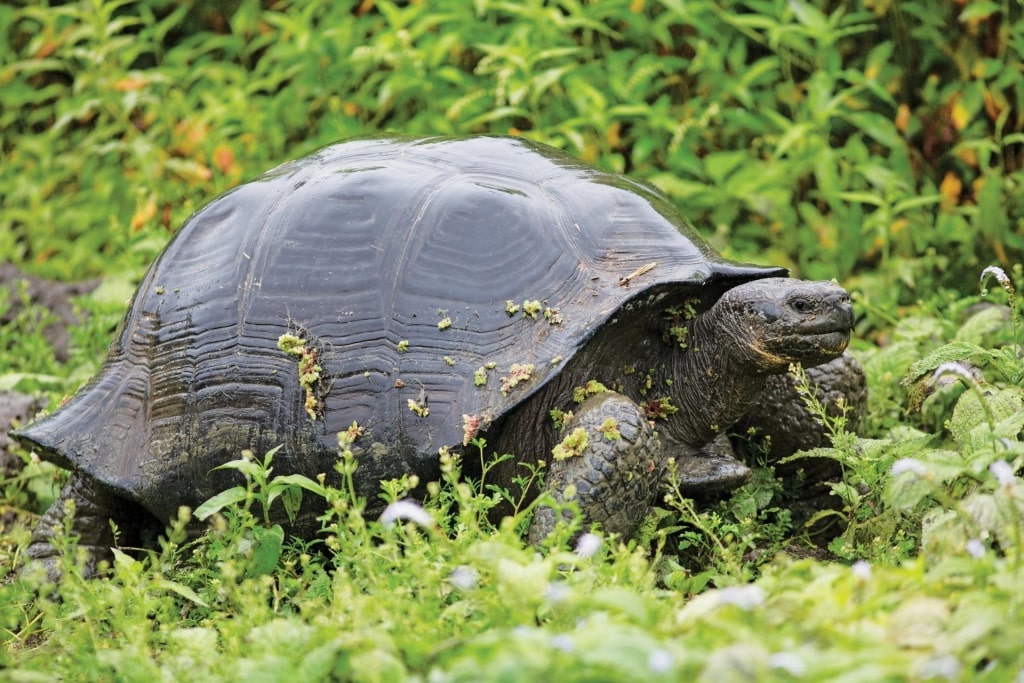
Galapagos tortoise
Visiting the Charles Darwin Research Station, just to the northeast of Puerto Ayora, is one of the best things to do in the Galapagos, especially if you want to learn about the conservation work that goes on in the islands.
There’s a captive breeding program here for giant tortoises, of which 12 sub-species remain in the archipelago. The tortoises are hatched here and raised in pens until they are big enough to survive in the wild, at which point they are released on the appropriate islands.
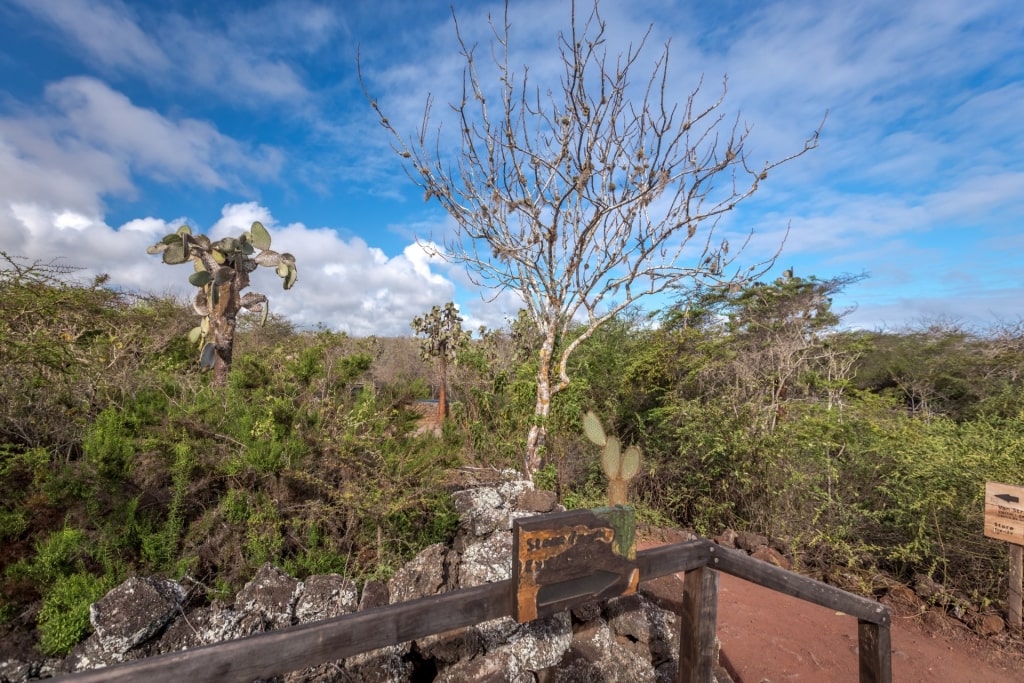
Charles Darwin Research Station
Marked trails wind around the main research center, where you can stroll and look out for birds. Visit the fascinating exhibition hall which tells the story of the work done by the Charles Darwin Foundation and has numerous exhibits including the massive skeleton of a Bryde’s whale.
See Giant Tortoises at El Chato Ranch
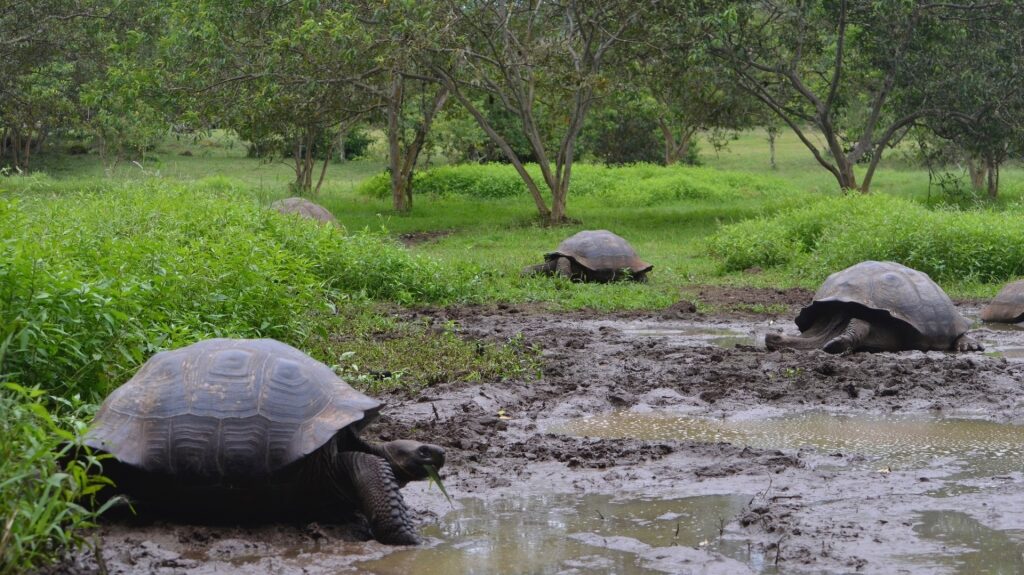
El Chato Ranch
Complete your picture of the giant tortoises of the Galapagos by heading to El Chato ecological reserve in the highlands of Santa Cruz. Here, these massive, slow-moving reptiles munch contentedly on the luxuriant vegetation and wallow in mud pools to cool off.
You can wander through the reserve with a guide, keeping a lookout for Darwin’s finches, herons, and vermilion flycatchers in between tortoise-spotting.
Or, armed with a flashlight, head with your guide into the ancient lava tunnels that form the underbelly of Santa Cruz island, dating back millions of years.
Hike to Tortuga Bay
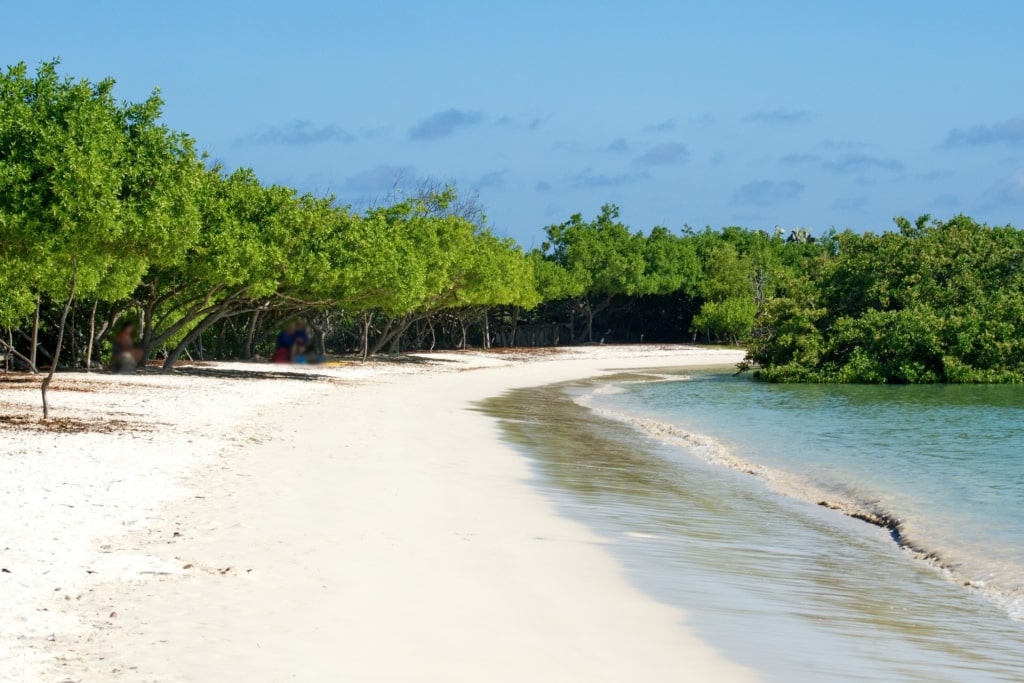
Tortuga Bay
The stroll along the marked trail from Puerto Ayora to Tortuga Bay takes about an hour. This is one of the few walks you can do in the Galapagos without a guide.
There’s abundant opportunity for bird-watching along the way; keep a look out for warblers, finches, and mockingbirds.
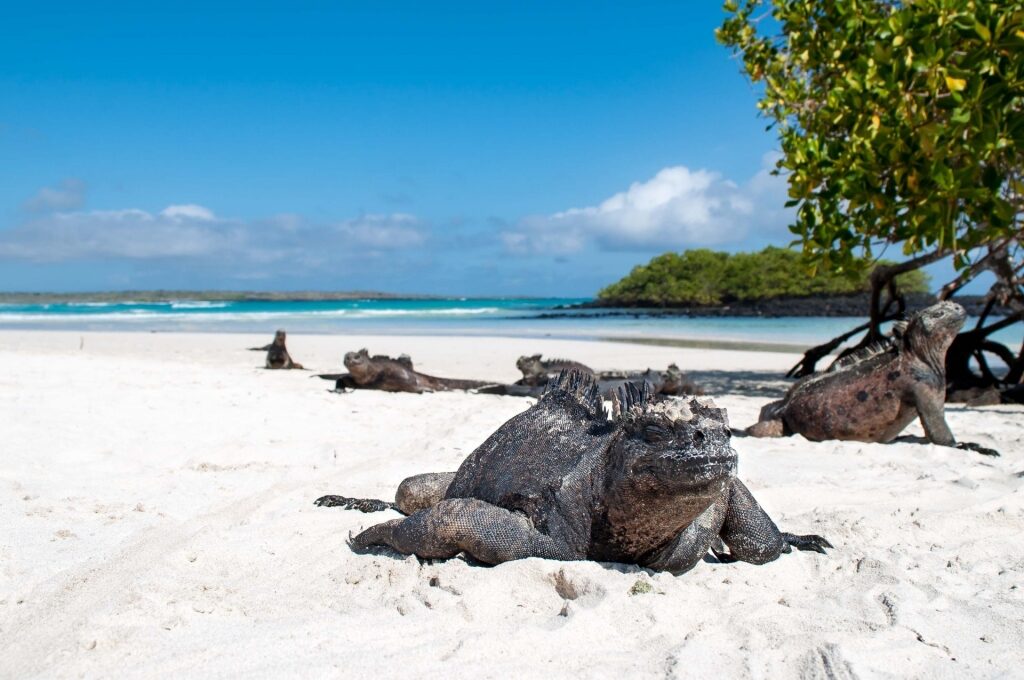
Marine iguana
Tortuga Bay itself is a vast, empty sweep of dazzling white sand and black rock outcrops, where you’ll spot Sally Lightfoot crabs, marine iguanas, and brown pelicans.
The currents are too strong for swimming here, but there’s a more sheltered cove across the low headland where you can take a dip or rent a kayak. You’ll need to sign in when you arrive and bring your own towel and refreshments.
Commune With Wildlife on South Plaza
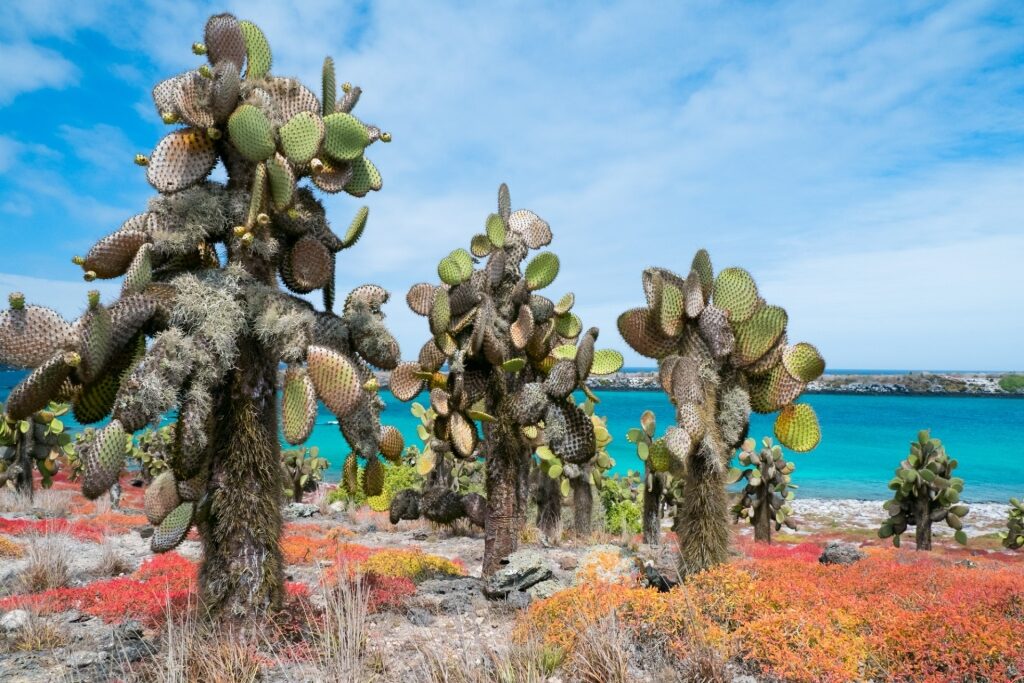
South Plaza
One of two islands consisting of uplifted, tilted volcanic rock, just off the northeast coast of Santa Cruz, South Plaza is a superb place to observe iguanas, as well as sea lions and birds.
You’ll wander through the otherworldly landscape of a cactus forest of sesuvium, which turns bright red in the dry season, when land iguanas rely on its flowers and fruit for food. The iguanas eat prickly pear, too, which is abundant here.
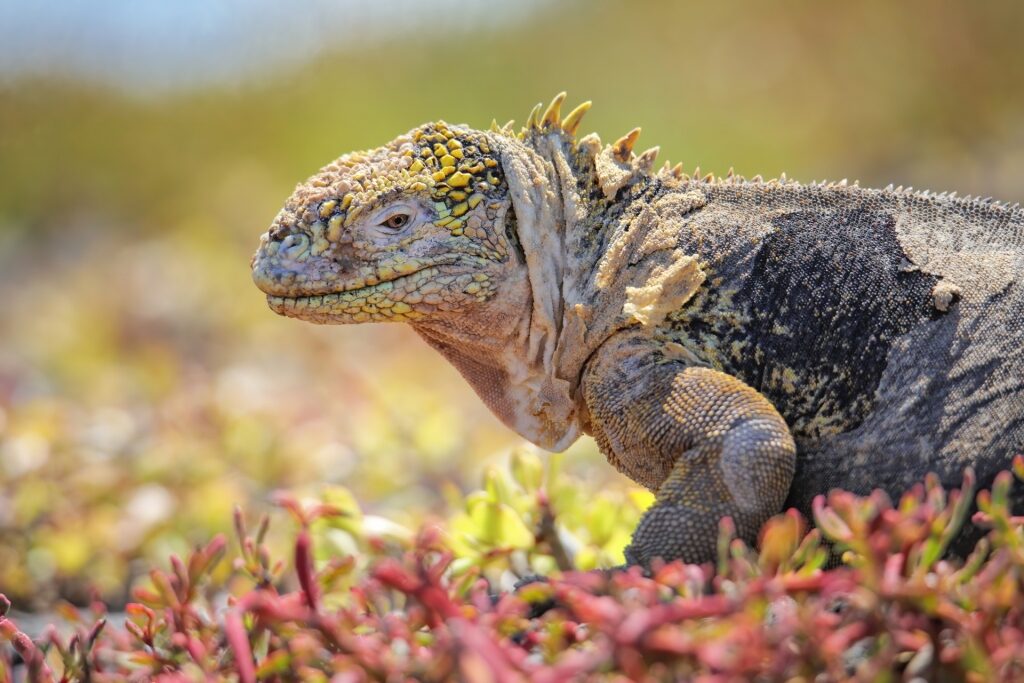
Land iguana
South Plaza is one of the few places where you could spot hybrid iguanas—the product of land and marine iguanas interbreeding.
Hike up the gently sloping trail, a walk of about two-and-a-quarter hours, to spot tropicbirds, Nazca and blue-footed boobies, and swallow-tailed gulls. There’s a colony of sea lions on the beach here, too.
Explore the Mangroves at Black Turtle Cove
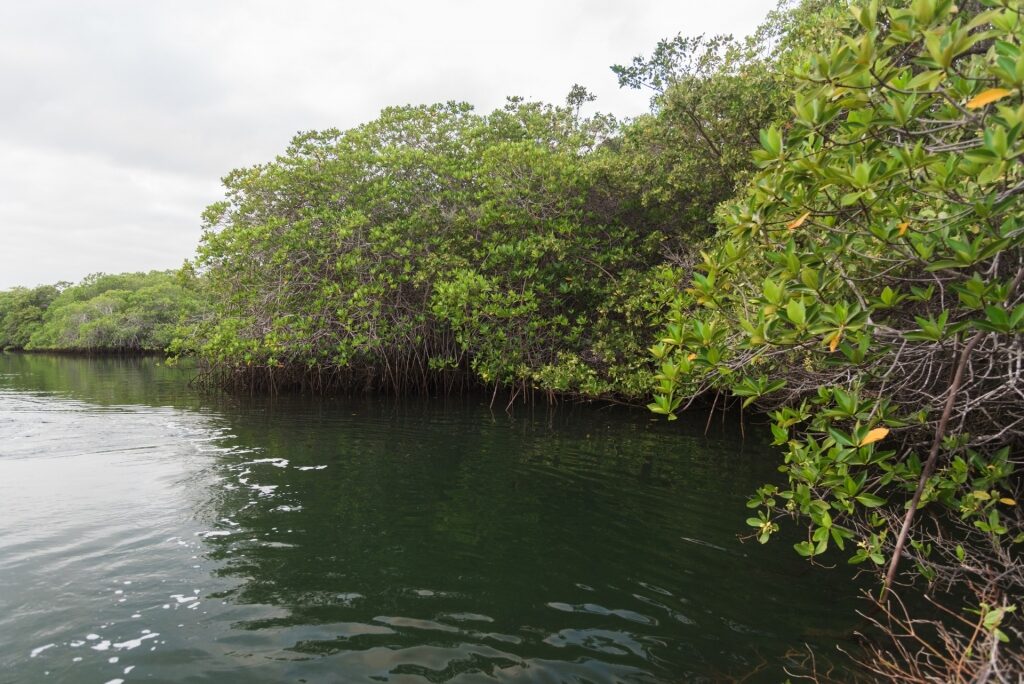
Black Turtle Cove
Tranquil Black Turtle Cove, on the north shore of Santa Cruz, is a sanctuary for birds, sea turtles, and other marine life. You can only visit by boat with the engine turned off to protect the pristine ecosystem.
Four species of mangroves line the cove and are the place to look for egrets and herons. Green sea turtles feed here, too, and you could spot large numbers of spotted rays in the shallows. Keep a lookout for small black and white-tipped reef sharks circling in the green water.
Food & Drink
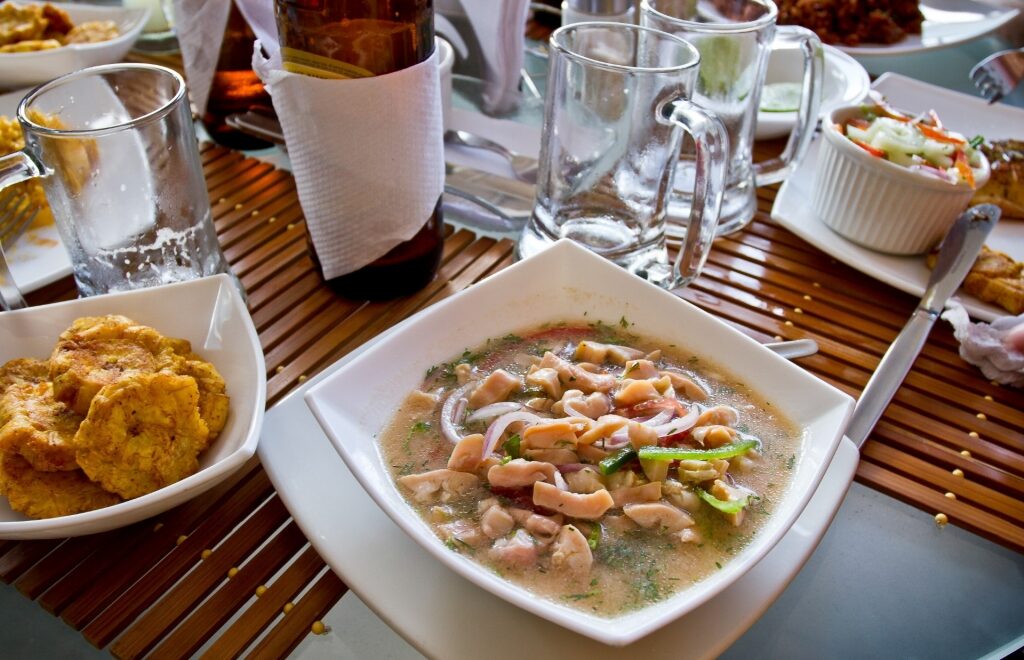
Ceviche
The cuisine of Santa Cruz reflects the diverse culinary scene of Ecuador as a whole, with a greater emphasis on seafood. You’ll find fresh ceviche, a deliciously tangy concoction of fish or shellfish marinated in lime juice and chili, on every menu.
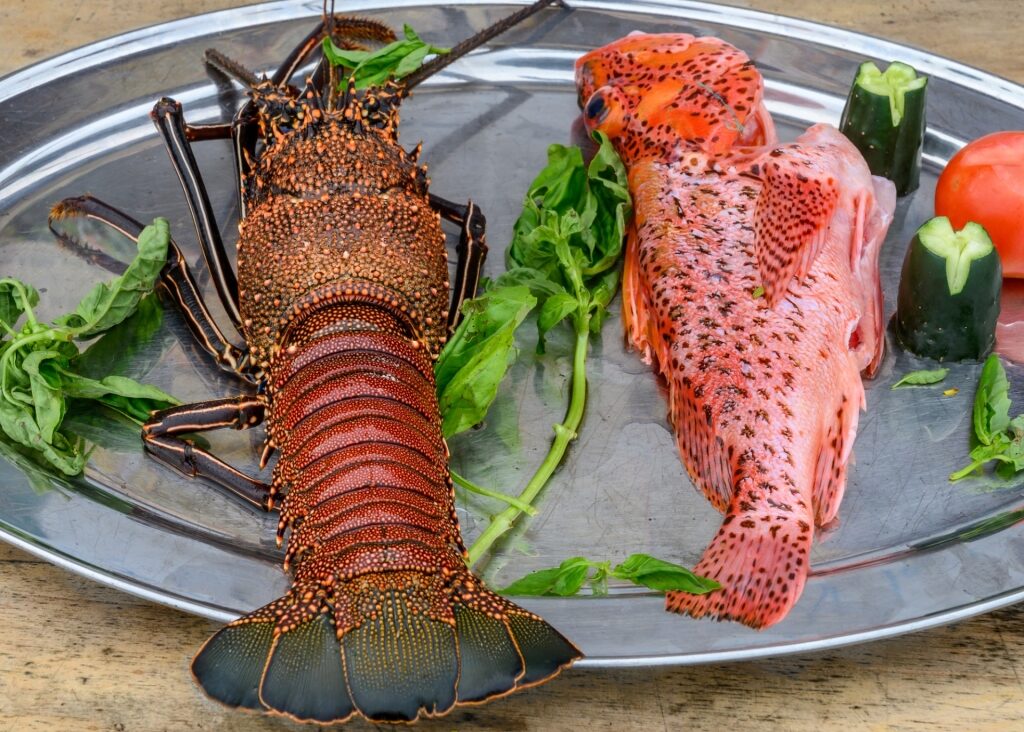
Seafood
Local species include sea bass, flounder, grouper, tuna, scorpion fish (brujo), and red snapper (pargo), as well as slipper lobster and red lobster, all sustainably fished.
A surprising amount of food is produced on the islands, with one of the biggest farming communities on Santa Cruz. Oranges, papaya, melon, watermelon, soursop, chilies, lettuce, arugula, and zucchini are all grown here.

Pan de yuca
Ecuadorian specialties, and Galapagos specialties in particular, include pan de yuca, which are mouthwateringly light buns made from cassava flour and cheese, and tamales, which are corn dough filled with chicken, beef, or pork and steamed in a banana leaf.
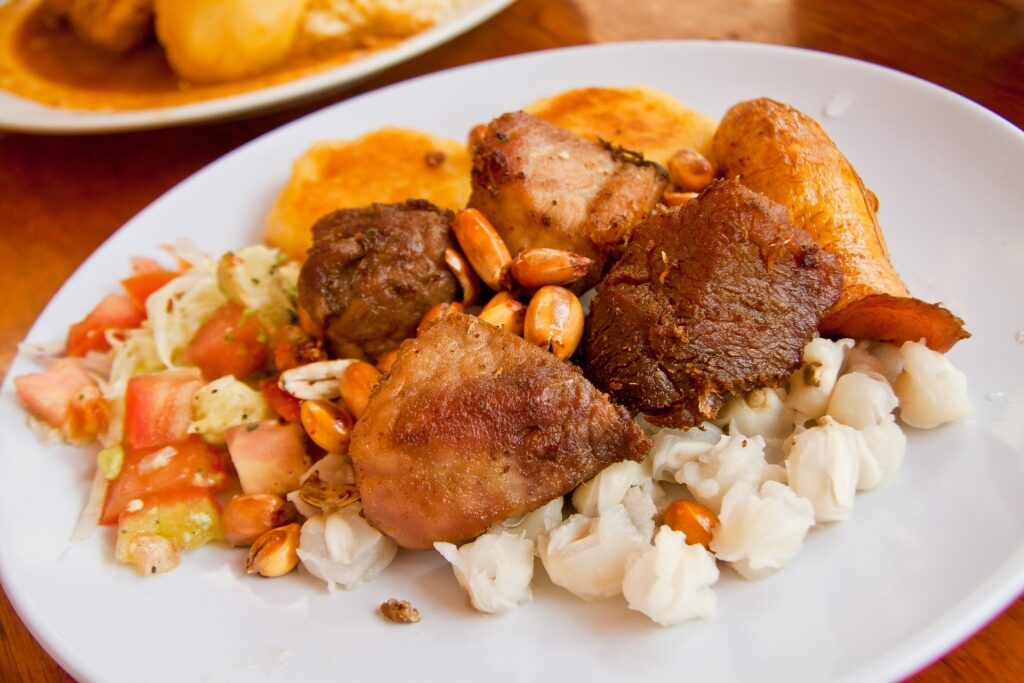
Fritada
Also look out for fritada, crispy pork with hominy corn and fried, ripe plantains. For breakfast, try guava or passionfruit jam and delicious guanabana juice.
When you’re in Puerto Ayora, try to get a waterfront table on the deck at Almar Seafood and Grill. As well as delicious, sustainably sourced Ecuadorian cuisine, you might spot a turtle or two while you’re eating lunch.
Best Time to Visit Santa Cruz Island
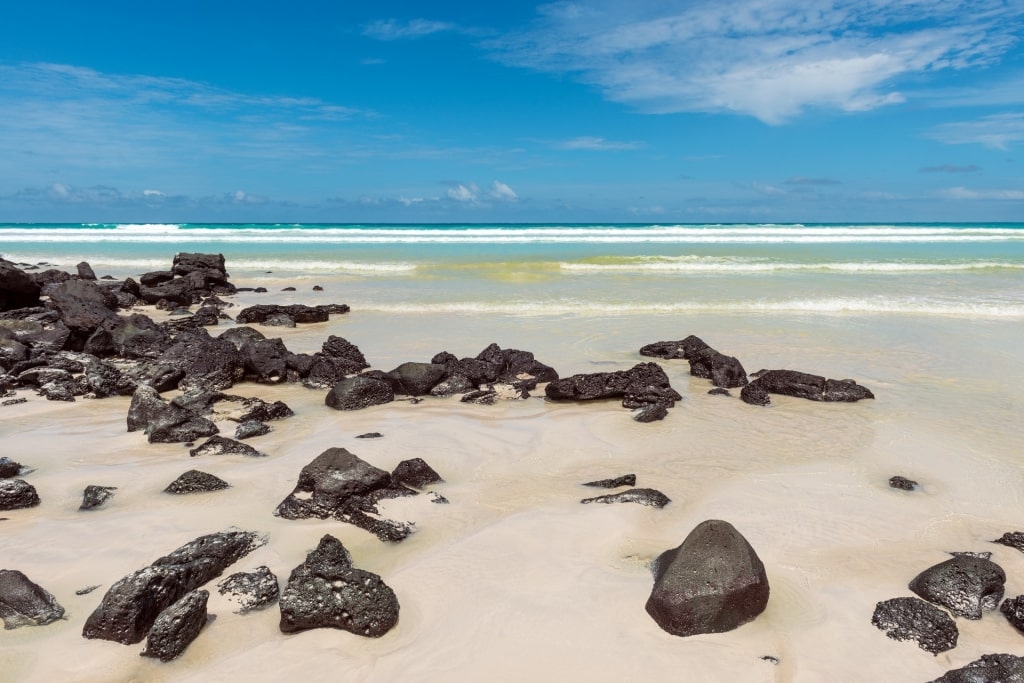
Santa Cruz
Santa Cruz is a year-round destination, divided into two seasons. January to June is hotter and wetter, while July to December is cooler and less rainy. But you can snorkel and swim in the sea year-round and hike in any month.
What determines when you visit is the wildlife that you’ll see here. Come from August to October to see newborn sea lion pups, or between April and May to witness the courtship dances of blue-footed boobies.
Read: Best Time to Visit the Galapagos
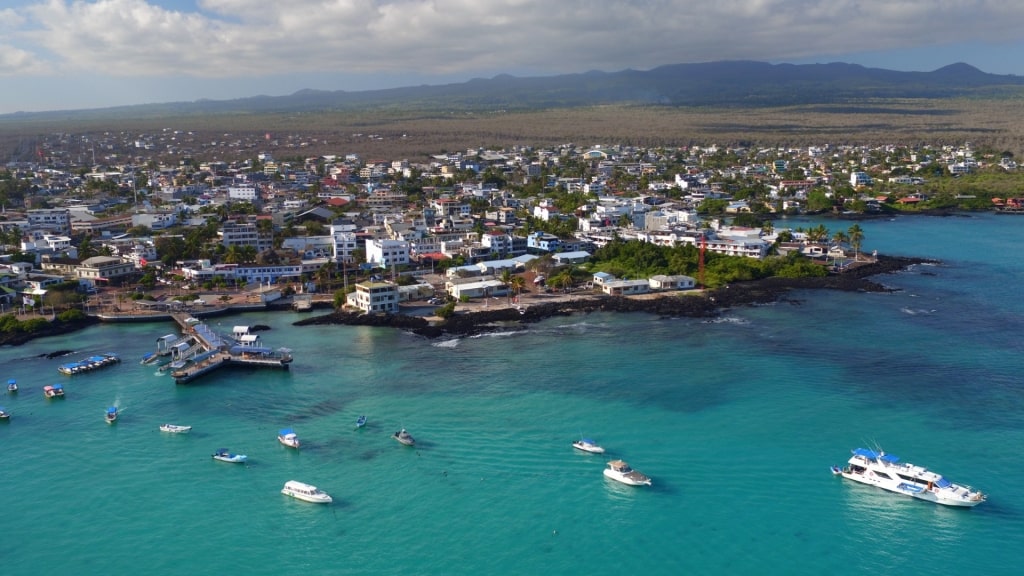
Puerto Ayora
Tempted to explore the unique landscapes and wildlife of the Galapagos? Browse our cruises to Santa Cruz and plan the expedition of a lifetime with Celebrity.
